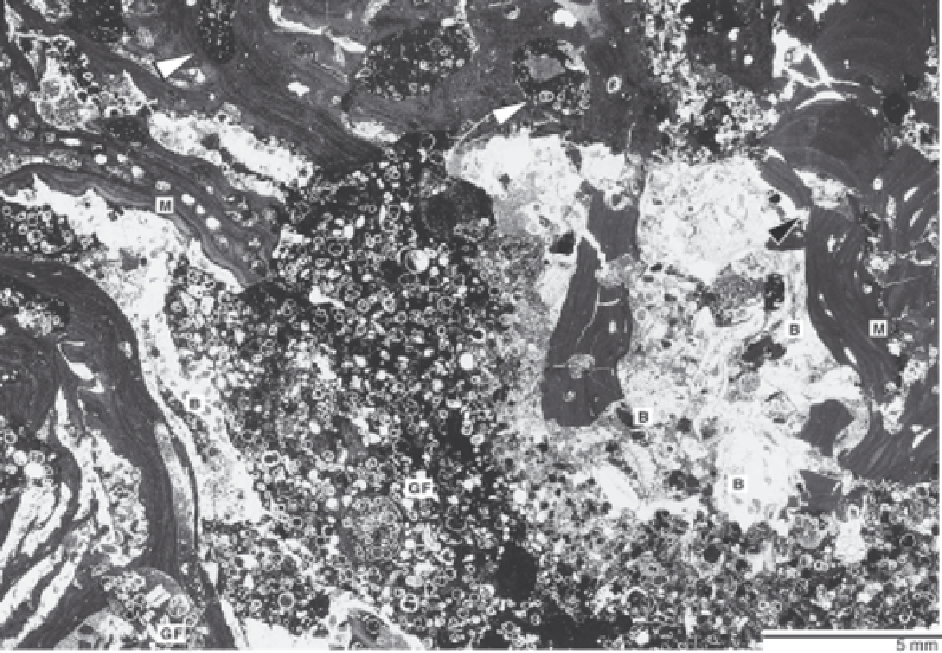Geology Reference
In-Depth Information
ates; infiltration of sand or shale into fissures and karstic
cavities.
• Brecciated carbonates adjacent to unconformity and
filling caves.
• Updip evaporite solution breccia.
• Diagenetic overprint. Change from marine diagen-
esis to freshwater diagenesis. Meteoric-vadose diagen-
esis at the top of shallowing-upward sequences. De-
dolomitization. Multiple early diagenetic overprint in-
dicating by crosscutting generations of vugs with geo-
petal infilling. Crosscutting can be used to establish
diagenetic logs showing the succession of diagenetic
events (Loreau and Cros 1988).
• Pisoids (Sect. 4.2.6). Pisoids are common constitu-
ents of supratidal vadose caps of peritidal cycles. Piso-
litic horizons intercalated within marine carbonates in-
dicate breaks in sedimentation caused by sea-level
drops and can record long-term non-marine phases (e.g.
karstification).
• Leaching and preservation of fossil shells (Voll-
brecht and Meischner 1993).
On rapidly subsiding platforms the sequence bound-
ary may be cryptic and located within very thin cyclic
carbonates showing evidence of maximum emergence
(quartz sand/silts on tops or reworked into bases of
cycles, clayey paleosols capping the cycles, and tepees,
calichified or brecciated caps of cycles).
Transgressive and flooding surfaces
• Surfaces directly underlying deeper facies (trans-
gressive surfaces).
Fig. 16.4.
Sequence boundary and Transgressive Systems Tract.
The thin section shows a limestone rich in corallinacean red
algae, bryozoans and pelagic foraminifera. These limestones, resting on Cretaceous platform carbonates, are widely distrib-
uted in the Southern Apennines (Carannante 1982). Bryozoans (B) and melobesiid red algae (M) grew in an open-shelf
environment. The association corresponds to rhodalgal grain association (see Sect. 12.2) indicating warm-temperate water.
Algal thalli were bored (white arrows) and infilled with pelagic lime mud containing globigerinid foraminifera (GF;
Orbulina
and
Globigerina
). Multiple boring is indicated by boring in fractured algal fragments (black arrow). Boring also continued
during further deposition of pelagic foraminiferal mud that developed into thin-bedded pelagic wackestones. The microfacies
of the sample characterizes a sequence boundary at the top of shelf carbonates formed during a lowstand phase. The bound-
ary corresponds to a minor flooding surface developed on a hardground. Hardground conditions are recorded by intensive
and multiple boring. Deepening upward is indicated by the significant microfacies change (SMF 8 to SMF 3). Tertiary
(Miocene): Cività di Pietraroia, eastern Matese Mts., Southern Apennines, Italy.

